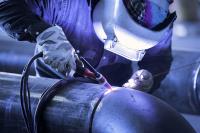 Add My Company
Add My Company
Sign In

MIG and TIG welding are two different processes, so it stands to reason that the gases they use would also be different. While both use an electric arc to weld metals, MIG can be done with an active (also called semi-inert) gas, while TIG needs an inert gas. This means the gases are not interchangeable and should be selected carefully.
As bottled gas suppliers, we’re taking a look at the reasons why you need to choose the right gas when welding – and which ones should be used for each process.
Why Do MIG and TIG Welding Need Shielding Gases?
First of all, it’s essential to understand why both MIG and TIG welding needs shielding gas. This is because you need to protect the area you’re welding from substances like oxygen and water vapour, and gases like argon can provide this protection. Other gases can be added to improve the stability of the arc and ensure the final result is of the highest quality.
So, if you didn’t have a shielding gas, you’d end up with a bad weld, which would lead to a poor product. Shielding gases are denser than air and must be used slowly when welding. They also allow you to weld at high temperatures, remove or reduce issues like spatter, and so on.
Inert and Semi-inert Gases in Welding
While it would make your life a lot easier to use the same gas for everything (and even help you save money), it’s important that you know the difference between inert and semi-inert gases to purchase the right ones for your project.
After all, there’s no one-size-fits-all when it comes to welding metal, which means you may end up doing both TIG and MIG welding. Having the right shielding gases will help you create a quality weld every time, regardless of which welding method you’re using.
Inert gases, like argon, don’t react with substances, making them ideal for certain welds, especially when it comes to non-ferrous metals. Semi-inert gases, such as oxygen and carbon dioxide, have low reactivity but enough to improve the arc. We provide oxygen gas bottles and CO2 bottles if you require them as well, so speak to us for more information on the correct gases for you.
Gases Used in Different Welding Processes
TIG welds can be easily damaged – the metal can become oxidised, for example – if you use semi-inert gases, while MIG is a more flexible process.
At Adams Gas, we love everything related to welding! Whether you’re just starting out or have many years of experience with both TIG and MIG welding, we have the bottled gases you need to make the project a success and other essential welding supplies, such as safety equipment and welding chemicals.
Understanding the different processes in-depth will help you know which gases are suitable for the work at hand, so if you’re unsure which bottle to get, you can send us a message with your enquiries, email us at sales@adamsgas.co.uk or call us on 0800 195 4445 for more information.
So, TIG welding typically uses argon because it’s versatile, safe and can be used on many different materials, such as aluminium and stainless steel. If you’re looking for TIG welding gas, we supply several argon gas bottles for various applications, so browse our product page to see our offerings.
This doesn’t mean that MIG doesn’t use argon, as this welding method can be done with different gases, including helium and CO2. The CO2 addition can impact the arc and increase penetration as well. You’ll be happy to know we also supply MIG welding gas bottles.
We’re written a blog about the difference between MIG and TIG welding gas, which will help you to make an informed decision when you’re looking to buy gas for your next project.
Why Are Gases Not Interchangeable Between MIG and TIG Welding?
As we’ve seen above, only a few gases can be used for TIG welding, while the same can’t be said of the MIG process (which can use combinations of inert and active gases).
Shielding gases affect the stability of the arc, the speed of the weld, the way heat is transferred, the penetration and the weld quality, so, to protect the tungsten electrode in the TIG welding process, you need a gas that can keep contaminants away and not impact the weld. An inert gas like argon will provide this stability and ensure there is no unwanted reaction with the metal when welding.
When it comes to MIG welding, you’ll see mixtures like 5% argon and 25% helium, which is a good choice for copper welds, for example, or even a mix of argon and carbon dioxide, which is not just a cost-efficient gas, but also creates a smoother arc. Using a purely inert gas will lead to taller welds too, which don’t look good and don’t perform as well.
For more information on WHY YOU CAN’T USE THE SAME GAS FOR MIG & TIG WELDING talk to Adams Gas
Enquire Now
List your company on FindTheNeedle.

